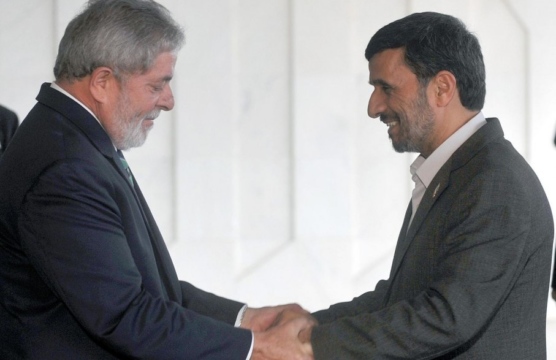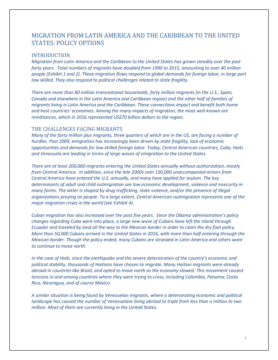
Congressional Testimony: Iran & Hezbollah in the Western Hemisphere
Iran’s influence in the region, even in the handful of countries where it has been most active, has only declined in recent years.
This post is also available in: Español
With support from Save the Children Mexico, the Inter-American Dialogue visited shelters across Tijuana to hear directly from migrant children and families about their migration stories. The initiative aimed to give migrant children a voice to share their experiences, thus raising awareness about their dreams, hopes, and fears for the future while also highlighting the challenges faced in accessing education and healthcare services.
Based on these testimonies, the Inter-American Dialogue partnered with AldeA Santiago to produce the video #SiguenSiendoNiños, which addresses several stories of migrant children in Latin America, including their challenges, dreams, and expectations of a new life.
The video premiered at the Second Regional Forum for Early Childhood Development in September 2024 in Bogotá, Colombia, where regional leaders were convened to reaffirm and advance the political and social commitment to the Regional Agenda for Early Childhood Development. As a result, representatives from governments, civil society, and cooperation agencies across Latin America and the Caribbean renewed their commitment to four core agreements while adding a crucial fifth in a landmark declaration:
This expanded framework, the 'Declaration of the Second Regional Forum for Early Childhood Development,' strengthens the region's commitment to early childhood development.
New document:
Despite the challenging situations that migrant children face, they continuously strive to live their childhood. Migrant children have aspirations: they want to be firefighters, police officers, doctors, astronauts, or veterinarians. They also share the same basic needs, such as attending school, receiving vaccinations, playing, and being protected.
While the efforts made by governments, civil society organizations, and cooperating agencies to address and respond to their needs are welcome, they remain insufficient. The Inter-American Dialogue presents the document Children and Adolescents on the Move—Listening to Their Voices: Testimonies of Fear, Hope, and Resilience, which sheds light on the need for states to ensure access to quality education and physical and mental services to migrant children.
Iran’s influence in the region, even in the handful of countries where it has been most active, has only declined in recent years.
Migration from Latin America and the Caribbean to the United States has grown steadily over the past forty years. In addition to leaving their countries amidst political and economic hardship, the vast majority of these migrants face additional challenges to their legal status. One way to look for solutions is to consider a comprehensive approach to migration through recruitment, retention, return, relief and reform.
There has been a sharp increase in the number of unaccompanied migrant children from Central America attempting to enter the United States in the past few years. This increase is also seen among adults, though to a lesser degree. As the United States, Mexico, and Central American countries struggle to address this crisis, debates have raged surrounding the humanitarian, legal, and political implications of any possible solution to this complex and troubling issue. This memo aims to inform the current debate by integrating data on issues triggering this outflow while also introducing the perspectives of the people and communities they affect. Specifically, it draws on data from 900 municipalities to analyze migrant hometowns in relation to human development,violence, and education.In addition, it presents the results of a nationwide survey in El Salvador and a survey of Central American migrants residing in the Washington, DC metropolitan area.
 Video Niñez Migrante
Video Niñez Migrante

